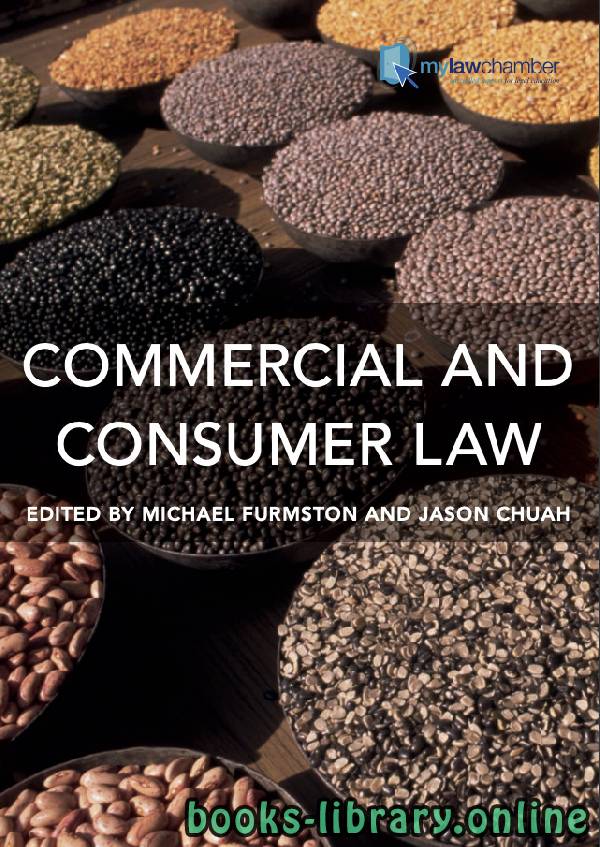📘 قراءة كتاب Commercial and Consumer Law أونلاين


Regulating the safety of consumer goods is undoubtedly justified, but an important consideration is how far it should go. It would be possible to look for absolute safety, but that
would impose burdens on business that some would regard as unwarranted.
Generally, the main reason for legislating in respect of unsafe consumer goods is information related since if consumers are unaware of hidden or long-term risks there is a justification for protecting them from those risks. This is especially so where simple market pressures
are not sufficient to compel producers to give consumers the necessary information. Generally, market pressures persuade manufacturers to highlight the positive aspects of their goods,
but what manufacturer is going to voluntarily highlight the fact that there is a chance that
consumers will be killed or seriously injured if they use a particular product? This may also
be viewed as a paternalistic argument premised on the belief that consumers are not well
positioned to assess risks and take steps to guard against them, so that state intervention is
justified to guard against the risks posed by unsafe goods.
A further issue is that of externalities, namely, the potential that a product has to cause
harm to persons other than the purchaser, for example, a defective car wheel may well result
in injury to the owner of a car, but injury may also be sustained by other road users, including pedestrians. While a purchaser can claim the protection of his contract with the person
who sold the vehicle, the same is not true of a mere bystander or even a relative of the
purchaser.
Generally, the approach to consumer safety is based on an economic approach which
suggests that consumer safety is desirable but only to the extent that the economic benefits
of regulation do not outweigh the costs imposed by regulation. Accordingly, what is sought
is not absolute safety, but instead a risk of harm that is reduced to the extent that is optimally
efficient. However, there are those who are uncomfortable with the idea that death or physical injury should be subject to economic considerations along these lines.
On occasions, it also appears that there may be political considerations where consumer
safety is concerned. For example, tragic safety errors can produce dramatic press headlines
which may create political pressure to intervene in the form of new legislation. It is not
307 SI 2005/1803, giving effect to the General Product Safety Directive, Dir 2001/95/EC. 308 SI 1994/2328. 309 EC 178/2002.
CHAPTER 7 CONSUMER PROTECTION
432
difficult to see how tragedies connected to the drug Thalidomide or the BSE scare and its connection to its human form, Creutzfeldt–Jakob Disease, created sufficient political pressure to
prompt legislative action to address the public concerns. This range of justificatory reasons
for legislative intervention may suggest that consumer safety policy may not have developed
on an entirely rational basis.
مما لا شك فيه أن تنظيم سلامة السلع الاستهلاكية له ما يبرره ، ولكن هناك اعتبارًا مهمًا هو إلى أي مدى يجب أن يذهب. سيكون من الممكن البحث عن السلامة المطلقة ، لكن ذلك
من شأنه أن يفرض أعباء على الأعمال التجارية التي يعتبرها البعض غير مبررة.
بشكل عام ، السبب الرئيسي للتشريع فيما يتعلق بالسلع الاستهلاكية غير الآمنة هو المعلومات ذات الصلة لأنه إذا كان المستهلكون غير مدركين للمخاطر الخفية أو طويلة الأجل ، فهناك مبرر لحمايتهم من تلك المخاطر. هذا هو الحال خاصة حيث ضغوط السوق البسيطة
ليست كافية لإجبار المنتجين على تزويد المستهلكين بالمعلومات اللازمة. عمومًا ، تقنع ضغوط السوق المصنعين بتسليط الضوء على الجوانب الإيجابية لسلعهم ،
ولكن ما هو المصنع الذي سوف يسلط الضوء طوعًا على حقيقة أن هناك فرصة لذلك
سيتم قتل المستهلكين أو إصاباتهم خطيرة إذا كانوا يستخدمون منتج معين؟ هذا قد أيضا
أن ينظر إليها على أنها حجة الأب على أساس الاعتقاد بأن المستهلكين ليسوا على ما يرام
في وضع يمكنها من تقييم المخاطر واتخاذ خطوات للحماية منها ، بحيث تدخل الدولة هو
مبرر للحماية من المخاطر التي تشكلها البضائع غير الآمنة.
وهناك مسألة أخرى هي مسألة العوامل الخارجية ، وهي احتمال أن يتسبب المنتج في حدوثه
ضرر لأشخاص آخرين غير المشتري ، على سبيل المثال ، قد ينتج عن عجلة سيارة معيبة
في حالة إصابة مالك السيارة ، ولكن قد تتعرض الإصابة أيضًا لمستخدمي الطريق الآخرين ، بما في ذلك المشاة. بينما يمكن للمشتري المطالبة بحماية عقده مع الشخص
من باع السيارة ، لا ينطبق الشيء نفسه على مجرد متفرج أو حتى قريب من
المشتري.
عموما ، فإن النهج المتبع في سلامة المستهلك يعتمد على النهج الاقتصادي الذي
يشير إلى أن سلامة المستهلك أمر مرغوب فيه ولكن فقط بقدر ما الفوائد الاقتصادية
التنظيم لا تفوق التكاليف التي تفرضها اللوائح. وفقا لذلك ، ما هو المطلوب
ليس الأمان المطلق ، ولكن بدلاً من ذلك خطر التقليل إلى الحد الأمثل
فعالة. ومع ذلك ، هناك أولئك الذين لا يشعرون بالارتياح لفكرة أن الموت أو الإصابة البدنية يجب أن تخضع لاعتبارات اقتصادية وفقًا لهذه الخطوط.
في بعض الأحيان ، يبدو أيضا أنه قد يكون هناك اعتبارات سياسية حيث المستهلك
تشعر بالقلق السلامة. على سبيل المثال ، يمكن أن تنتج أخطاء السلامة المأساوية عناوين الصحف الدراماتيكية
مما قد يخلق ضغطًا سياسيًا للتدخل في شكل تشريع جديد. ليس
307 SI 2005/1803 ، مع تفعيل التوجيه العام لسلامة المنتج ، Dir 2001/95 / EC. 308 SI 1994/2328. 309 EC 178/2002.
الفصل 7 حماية المستهلك
432
من الصعب أن نرى كيف أن المآسي المرتبطة بمخدر الثاليدوميد أو مرض جنون البقر وعلاقته بشكله البشري ، مرض كروتزفيلد جاكوب ، تسببت في ضغوط سياسية كافية ل
إجراء تشريعي سريع لمعالجة المخاوف العامة. هذه المجموعة من الأسباب المبررة
للتدخل التشريعي قد تشير إلى أن سياسة سلامة المستهلك قد لا تكون وضعت
على أساس عقلاني تماما.
سنة النشر : 2010م / 1431هـ .
نوع الكتاب : pdf.
عداد القراءة:
اذا اعجبك الكتاب فضلاً اضغط على أعجبني و يمكنك تحميله من هنا:

شكرًا لمساهمتكم
شكراً لمساهمتكم معنا في الإرتقاء بمستوى المكتبة ، يمكنكم االتبليغ عن اخطاء او سوء اختيار للكتب وتصنيفها ومحتواها ، أو كتاب يُمنع نشره ، او محمي بحقوق طبع ونشر ، فضلاً قم بالتبليغ عن الكتاب المُخالف:
 قبل تحميل الكتاب ..
قبل تحميل الكتاب ..
يجب ان يتوفر لديكم برنامج تشغيل وقراءة ملفات pdf
يمكن تحميلة من هنا 'http://get.adobe.com/reader/'


 منصّة المكتبة
منصّة المكتبة 